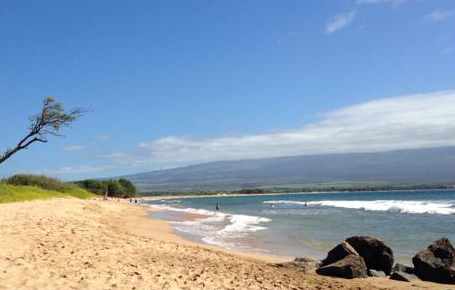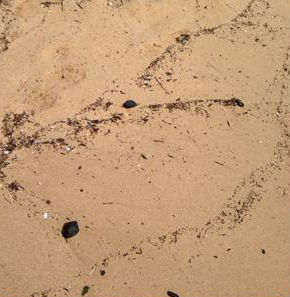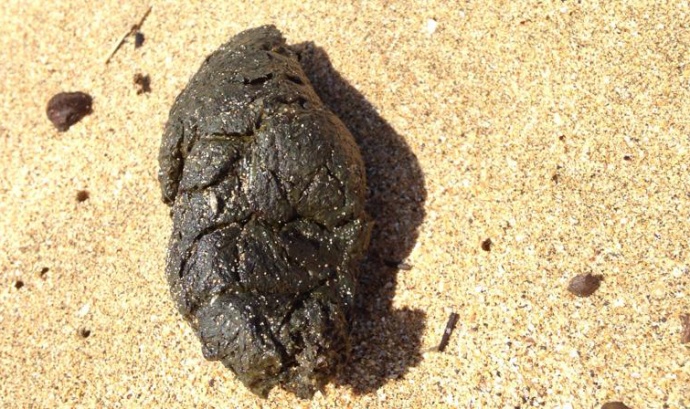Turtles Named as Likely Culprit in Shoreline Waste
By Wendy Osher
When a concerned resident sent in photos to our Maui Now newsroom of what appears to be fecal matter littering a portion of South Maui shoreline, we checked with state health department officials who say the images “resemble that of turtle feces.”
The resident reported “dozens” of “specimens” washed on shore in the area between Māʻalaea and Sugar Beach on Sunday, Jan. 26, 2014.
Roland Asakura, an Environmental Health Specialist for the Clean Water Branch of the Hawaii Department of Health, said in the past he has received reports of fecal matter, resembling the attached photo, washing up on the shore along this same stretch of beach in Māʻalaea.
In the previous incidents, “The pieces were believed to be turtle feces due to the fact that their interior were found to be green in the color and they did not break apart when pressed.”
According to Asakura, the health department currently conducts bacteriological sampling at Haycraft Park in Māʻalaea twice weekly.
The results from the health department’s Water Quality Data, which includes tests for fecal contamination of near shore waters, can be viewed online at the DOH website.
In 2008, a similar incident was reported along the same stretch of shoreline in which state health officials confirmed the material as turtle feces and told the Honolulu Star-Advertiser that the waste “isn’t a threat to human beings.”
In both cases, residents wondered if the waste could have come from boats not utilizing waste pump stations, or a leak from condos along the shore.
County of Maui Communications Director Rod Antone explained, “According to our Department of Environmental Management, feces does not usually remain solid as it goes through a collection system, whether you are talking about the county’s system or that of a boat or yacht or some other vessel. Therefore it would not be in a solid form as this person has found it.”
Antone said the report was the first received by the County of Maui relating to fecal matter in the area.
According to the Maui Ocean Center website, “the green sea turtle population has increased substantially,” since their listing as a threatened species in 1978, “however, like many protected species, they still face an uncertain future.”
Others believe honu populations have recovered enough to seek “de-listing” of the turtles from the US Endangered Species list.
According to the National Wildlife Federation, green sea turtles can grow to 3 to 4 feet in length and can weigh upwards of 300 to 350 pounds as an adult.
To view water quality reports for Maui, visit the health department’s Water Quality Data online.













